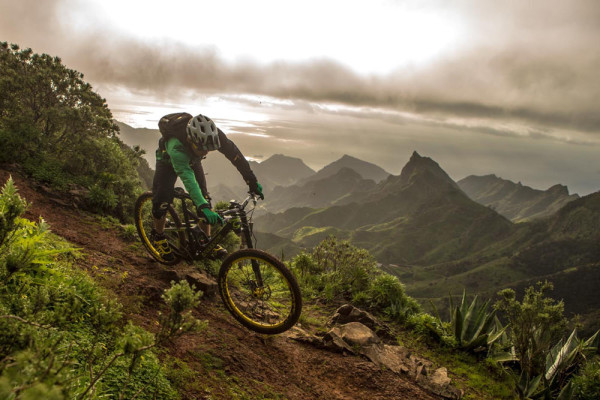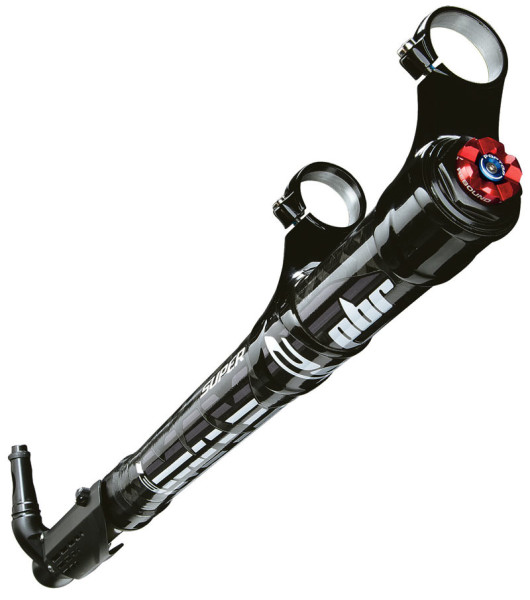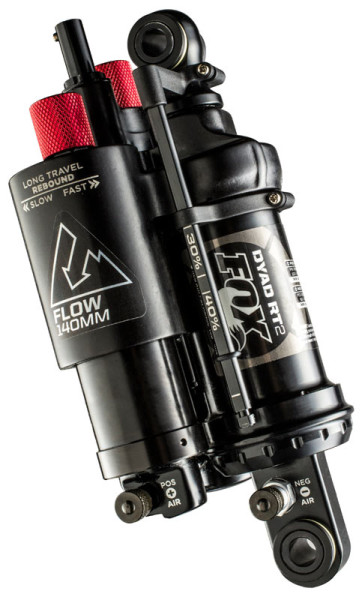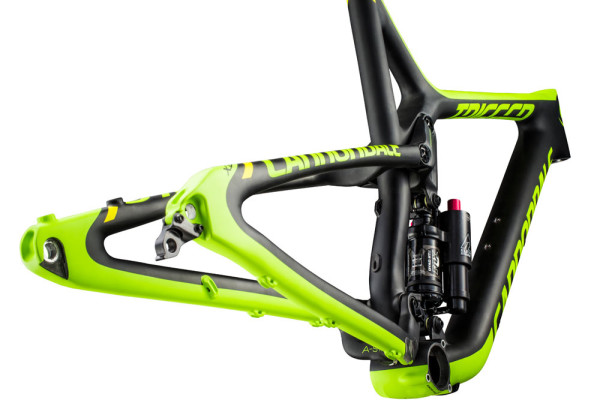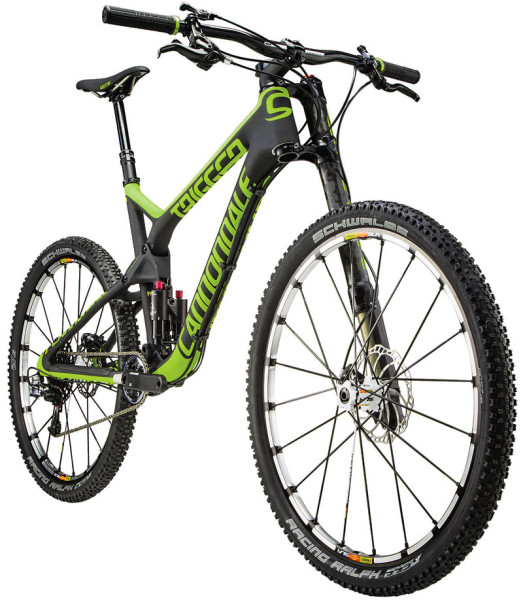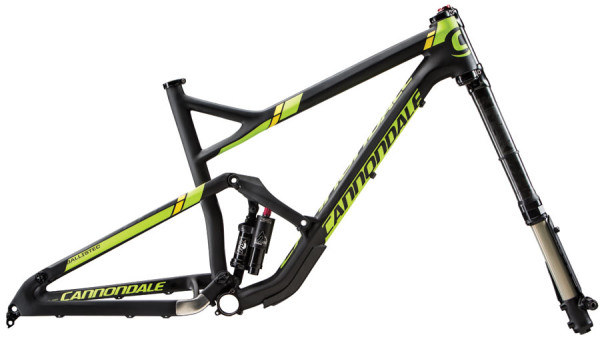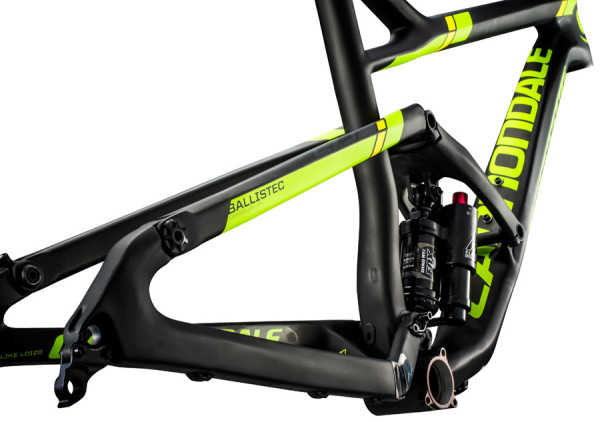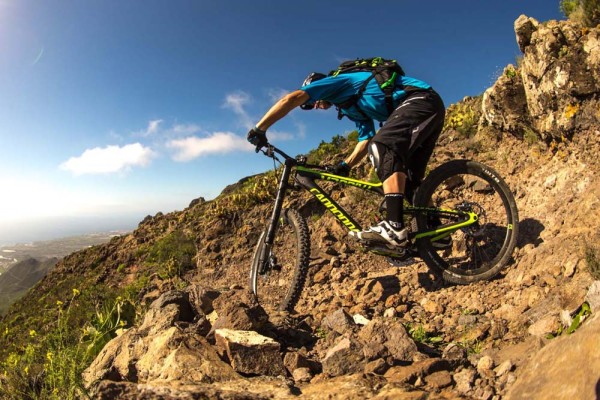The big “C” has finally jumped into the 650B game with all-new Cannondale Trigger 27.5 and Jekyll 27.5 mountain bikes. To go with them, they’ve introduced longer travel Lefty SuperMax forks to match.
Introduced as a 130mm part on the Trigger 29er, we first spotted a prototype longer travel Lefty SuperMax on team rider Ben Cruz’s bike last fall. They recently announced that their team riders would be racing on a new version of the fork, but details were scant until now.
The bikes themselves get reworked frames, particularly the Trigger, and both completely replace the 26″ models. As in, no more 26″ wheeled Trigger or Jekyll. Both get longer top tubes and front centers and slacker head angles, making them more stable when descending. But, as you’ll see, that’s not at the expense of pedaling proficiency…
LEFTY SUPERMAX & DYAD SHOCK UPDATES
These bikes introduce much longer travel Lefty SuperMax forks, coming in at 160mm (Jekyll) and 140mm (Trigger) depending on the bike. That’s up from the 130mm introduced on the Trigger 29er, but it’s more than just a travel change. Cannondale’s MTB PR manager Peter Vallance says it’s an entirely new structure and damper. He says the revised tune, dampers and internals make for a much more supple fork through the mid-stroke with less force required to get it moving initially.
Each bike will get it’s own internals, with the Trigger using a Trail Damper and Jekyll running an Enduro Damper. Like the 29er version, axle offset is specific to the wheel size, so it’s not just a delimited 29er version. Offset is 60mm on the 29er and 50mm for the 27.5 forks.
The carbon version is 1855g and alloy is 2055g (claimed weights). Both will be available aftermarket, too, and can be used with their Lefty For All adapter kit to run on any modern frame.
UPDATE: Here’s more detail from Cannondale’s Murray Washburn: “On SuperMax, the different travel levels get different length internal needle bearing strips and bearing races, so travel is set at the factory. The Trigger 29 and Trigger 27.5 both use the updated “trail” tune damper which has a new Widemouth piston that increases the forks’ plushness by reducing high speed compression damping while keeping low speed compression intact to retain the fork’s resistance to brake dive. For the Jekyll’s 160mm SuperMax, we created what we called the “endure tune” damper, which has a different (larger) shaft diameter and different valving designed to increase the plushness for sharp, high speed impacts and fast, choppy hits like you’d find in the EWS style racing. We also change the airspring volume/spring rate for each fork to suit the travel and damping.”
Out back, the dual-travel DYAD shock gets new pistons and internals, letting it move more oil through the circuit under mid- and high speed compression for improved sharp edge and bit hit response. Check the tech basics on how the DYAD shock works here. As a quick refresher, the way Cannondale’s dual travel suspension bikes work is fairly unique, with the shock simply limiting travel in the shorter “Elevate” mode and opening up a secondary chamber for the longer travel “Flow” mode. We reviewed it on the Trigger 29er last year, and it works brilliantly because it keeps the bike’s geometry sitting up higher for the shorter travel mode, then drops the angles, BB and sag for longer travel mode. Essentially, things are where they should be for the designated travel, and it does all that with minimal weight penalty.
They also changed the recommended sag rating from 40% to 30%, giving the shock (and bike) more usable travel. A better sag indicator on the side simplifies set up. The improved oil flow also let them increase the range of rebound adjustments, giving you more control over the feel. All in all, the changes help it match the feel and performance of the new PBR damper in the Lefty SuperMax.
2015 CANNONDALE TRIGGER CARBON 27.5″
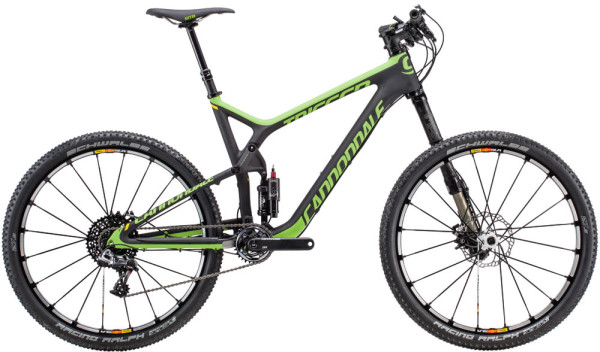
The new Trigger is a big departure from the original 26″ bike. Before, it was sort of a maladjusted XC bike that didn’t fit directly into any category. Now, it’s “a full on Trail bike, ready for any madness you can throw at it,” as Vallance put it.
Travel increases to 140mm with an 85mm Elevate (climbing) mode. Different frame configuration in the way the pull shock works, mimicking the Trigger 29er’s design rather than the very Jekyll-like 26″. The upper pivot is moved considerably further forward than on the 29er, though. It upgrades to a rear thru axle and keeps the solid rear triangle of the Trigger Carbon 29ers (alloy bikes use a rear axle). This likely means designed-in flex at the seat stays, but also a rear end that resists twisting and lateral forces quite well. Internal “stealth” dropper seatpost routing on both bikes pops in on the back of the seat tube, behind the shock. Most other cable routing runs externally on the bottom of the bikes.

The 27.5″ Trigger starts off a full degree slacker at the head tube, too, at 68º, and a 73.5º seat angle in Elevate. It drops one degree for Flow, and bottom bracket height drops 10mm, putting the bike a little further into its sag to keep the suspension working the way it should when switched to long travel.
While the Trigger 26″ had been limited to just a single model for European markets only for the past year or so, this one completely replaces any 26″ offerings in the line. The Trigger 29er bikes remain.
2015 CANNONDALE JEKYLL CARBON 27.5″
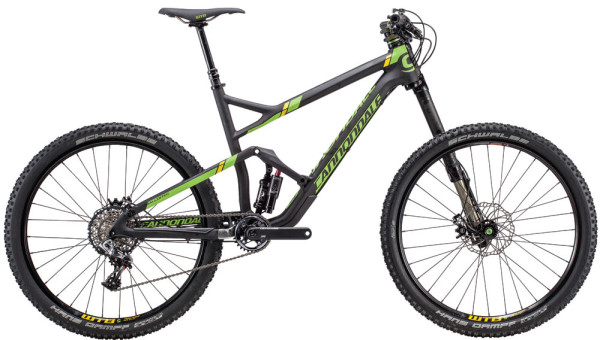
The Jekyll looks mostly the same but also gets a bump in travel. It used to be 150mm, now it’s a 160mm enduro bike. When it’s time to climb to the next start, pop it into the 95mm Elevate mode.
This one has a steeper 74.9º static seat angle when in Elevate but a slacker 67º head angle. The idea is to put the rider in an aggressive pedaling position without giving up stability at speed. Like the Trigger, it gets one degree slacker for Flow mode. Bottom bracket also drops 10mm on this one.
If that geometry sounds weird, it apparently works. It made sense for us on the older bikes we’ve ridden, and it’s since been proven under some of the best enduro riders like Jerome Clementz, Ben Cruz and Mark Weir. And they’ve been working on it for quite a while. Vallance says they’ve been testing it for a full year, with full race testing starting the day after Clementz’s Enduro World Series finals win last fall. He won the Andes Pacifico in Chile in February on the new bike.
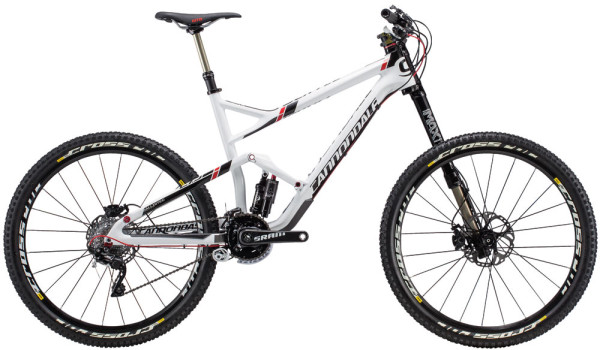
Pricing and full spec lists should be finalized next week. No word on alloy models yet, but we’d bet they’re on the way, too.
VIDEOS
Jekyll Overview above, Trigger below.
2015 DYAD RT2 overview above, Jerome’s Andes Pacifico win below (using a Rockshox fork). Those yellow wheels are most likely the Mavic CrossMax Enduro launched last year.
Quick side note: We asked about Mark Weir’s health and word is he’s walking again after having his pelvis crushed by a falling tree. Speedy recovery, sir, and best wishes.
